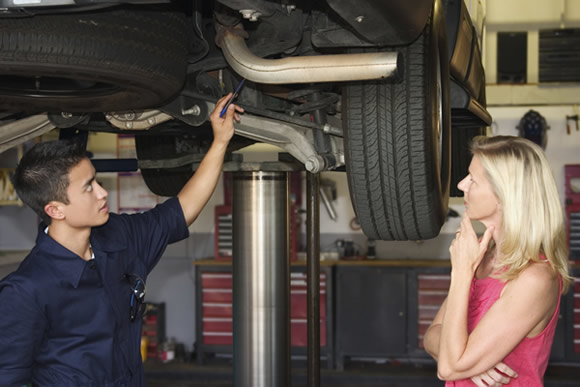<h2 style="text-align: justify"></h2>
<p style="text-align: justify">Recently a ruling was issued by the National Highway Traffic Safety Administration requiring all vehicles to have rearview camera technology available as standard by May of 2018. This ruling came on the heels of a lawsuit demanding the government enforce a law passed in 2008 requiring increased visibility of the area immediately behind the vehicle. The final rule passed by the NHTSA is one that can only be met by use of rearview camera technology. The following provides the details you need to know about the ruling and how it impacts you and your future car buying.</p>
<h3 style="text-align: justify"><strong>Why Is This Necessary</strong>?</h3>
<p style="text-align: justify">On average, 210 fatalities and over 15000 injuries are caused every year by accidents involving backing into somebody: most commonly children and the elderly. The law, titled the Cameron Gulbransen Kids Transportation Safety Act (named for a child killed in 2002 when his father accidentally backed into him), required the NHTSA to make a rule to address the problem. The new rule is expected to prevent up to 15 deaths and 1300 injuries annually.</p>
<h3 style="text-align: justify"><strong>Don’t Cars Already Have These</strong>?</h3>
<p style="text-align: justify">While approximately 85% of vehicles of model 2014 will have rear-view cameras as an option, it isn&#8217;t standard and many models still don&#8217;t have them at all. Furthermore, this option often raises the cost of the vehicle since it is still considered an add-on on most models, though a few include the rear-view cameras as standard. The ruling will make rear-view camera technology a required standard on vehicles as common as rear-view and side-view mirrors are today.</p>
<h3 style="text-align: justify"><strong>Isn’t the Technology Expensive</strong>?</h3>
<p style="text-align: justify">The costs of the technology have already been calculated, and it is in fact a whole lot cheaper than one might think. Not only will vehicles be expected to already be in compliance with the rule by the year 2018, the cost for retrofitting older vehicles will be less than $200 per vehicle. Vehicles that already have a suitable display (such as a GPS system) can be retrofitted with this technology for only about $45 per vehicle, while vehicles without such a display would only cost between $132 and $142 each. So the final cost added onto a new vehicle is really quite low compared to the overall price.</p>
<h3 style="text-align: justify"><strong>Will This Happen All at Once</strong>?</h3>
<p style="text-align: justify">The ruling actually establishes a phase in schedule that starts in May of 2016. In that year the ruling will only require about 10% of all vehicles to have this technology built in as standard, then by May of 2017 a total of 70% of all vehicles will have this requirement. Finally, by May of 2018, all vehicles of that model year will be required to have this technology built in.</p>
<h3 style="text-align: justify"><strong>Do I Have to Upgrade My Vehicle</strong>?</h3>
<p style="text-align: justify">Last, but certainly not least: requirements for your own vehicles. While all new vehicles manufactured in the year 2018 or later will be required to have this technology included, the ruling makes no mention of vehicles manufactured before the year 2016. As such, there is no part of the ruling that requires you to upgrade your vehicle to incorporate rear-view technology and vehicles made prior are essentially ‘grandfathered’ in. While it is a good idea to upgrade if you have the funds and it is possible to do so for your vehicle, it is not strictly necessary at this time.</p>
<h3 style="text-align: justify"><strong>Conclusion</strong></h3>
<p style="text-align: justify">Hopefully this article helped shed some light on the NHTSA ruling requiring rear-view camera technology to be incorporated in new vehicles. This ruling will hopefully lead to a safer future and save lives as older models gradually break down or are junked and replaced with newer models with rear-view cameras, and therefore helping to prevent tragic accidents from occurring for years to come.</p>
<p style="text-align: justify"><strong><em>Sources:</em></strong></p>
<p style="text-align: justify"><em>National Highway Traffic Safety Administration</em></p>
<p style="text-align: justify"><em>LA Times</em></p>
<p style="text-align: justify"><em>Washington Post</em></p>
<p style="line-height: 1.15;margin-top: 0pt;margin-bottom: 0pt;text-align: justify"><em>Detroit Free Press</em></p>
<p style="text-align: justify">This article was written by Brennen Kliffmueller. Brennen is a frequent volunteer at his local hospital where he sees countless injuries caused by completely preventable accidents. With his knowledge of safety standards and training, he writes professionally for eCompliance.com. To view more of his work, be sure to visit his Google+.</p>

The New Car Safety Requirement That Will Save Hundreds Of Lives
